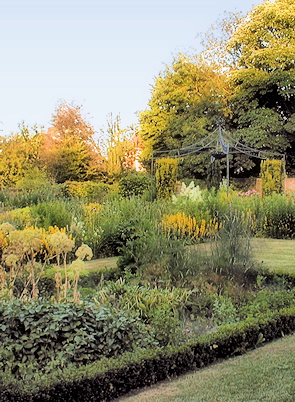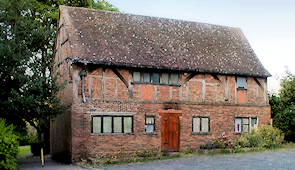Eastcote
Eastcote, Hillingdon
A Metroland suburb born from a medieval village located east of Ruislip, having formerly been part of its parish and manor

Eastcote’s name, which dates from the 13th century or earlier, means ‘eastern cottages’; Ruislip at one time had a Southcote and a Westcote as well. During the Middle Ages the forest was cleared for arable farming and cattle grazing.
Eastcote House was the home of the Hawtrey family and their descendants from about 1532 to 1880. Oliver Cromwell supposedly stayed at the house and billeted his troops here during the Civil War.
Alice, Countess of Derby, built the grander Haydon Hall around 1630, conceivably as a place to keep her possessions out of the reach of her corrupt son-in-law. Subsequently rebuilt and then extended, the hall was acquired in 1805 by Dr Adam Clarke, an eminent Methodist theologian.
The Ruislip Enclosure Act of 1804 brought the subdivision and hedging of Eastcote’s farmland, most of which was given over to growing hay. Bridle Road was so named at the time of the enclosure act, when it became a 20-foot-wide bridleway.
Apart from a few villas built on Chapel Hill in the 1870s and 1880s, Eastcote remained an isolated community of about a hundred scattered farms and cottages, mostly near the River Pinn, until the late 19th century. The principal visitors by this time were cyclists taking rides into the countryside.
In 1906 the Metropolitan Railway opened a halt in the locality formerly known as Field End and mains utility services were laid on soon afterwards. A station was built in 1910, when District Railway services began. While the area remained rural, the station drew London day-trippers and several tea gardens flourished in the vicinity.
From the 1920s, Metroland engulfed the village, but several 16th- to 18th-century buildings remain. Detached and semi-detached houses spread, first north of the railway, and then south to cover the former sports fields and pig farms. St Lawrence church was built on Bridle Road in 1933.
At the outbreak of the Second World War the government requisitioned a meadow at the northern end of Lime Grove and built a small military hospital. This proved surplus to requirements so the buildings were used as a barracks. After the war, the site became the original base for the communication interception operations of Government Communications Headquarters. The two remaining Colossus decoding machines that had helped break Germany’s ciphers in the war were brought here from Bletchley Park, Buckinghamshire, and remained here until GCHQ moved to its present home in Cheltenham. The site later became a government computer centre.

The capital’s post-war housing shortage prompted the local authority to construct nearly a thousand new homes in Eastcote, together with schools and shops. Most of these properties are now privately owned.
Eastcote House was demolished in 1964, although its dovecote, coach house (show right) and walled garden survive. Haydon Hall met the same fate later in the decade, and its site is now Eastcote Cricket Club’s ground.
The original heart of Eastcote, located north-west of Bridle Road, is now called Eastcote Village to distinguish it from later development that spread outwards from the station.
The vast majority of Eastcote’s residents are white, and enjoy relatively high standards of living.
The TV and radio presenter Fearne Cotton grew up in Abbotsbury Gardens and attended Newnham Junior School and then Haydon School.
Postcode areas: Pinner HA5 and Ruislip HA4
Population: 23,800 (Cavendish, and Eastcote and East Ruislip wards, 2011 census)
Station: Piccadilly line (peak hours) and Metropolitan line (zone 5)
Further reading: Colleen A Cox, A Quiet and Secluded Spot: Ruislip, Northwood and Eastcote, 1851–1881, Ruislip, Northwood and Eastcote Local History Society, 1991
and Ron Edwards, Eastcote from Village to Suburb: A Short Social History, 1900–1945, Hillingdon Borough Libraries, 1987
Website: Eastcote Local (mostly ads but some community input)
View larger OpenStreetMap
The above article is a synthesis of text taken from Chambers London Gazetteer’s separate entries for Eastcote and Eastcote Village.
